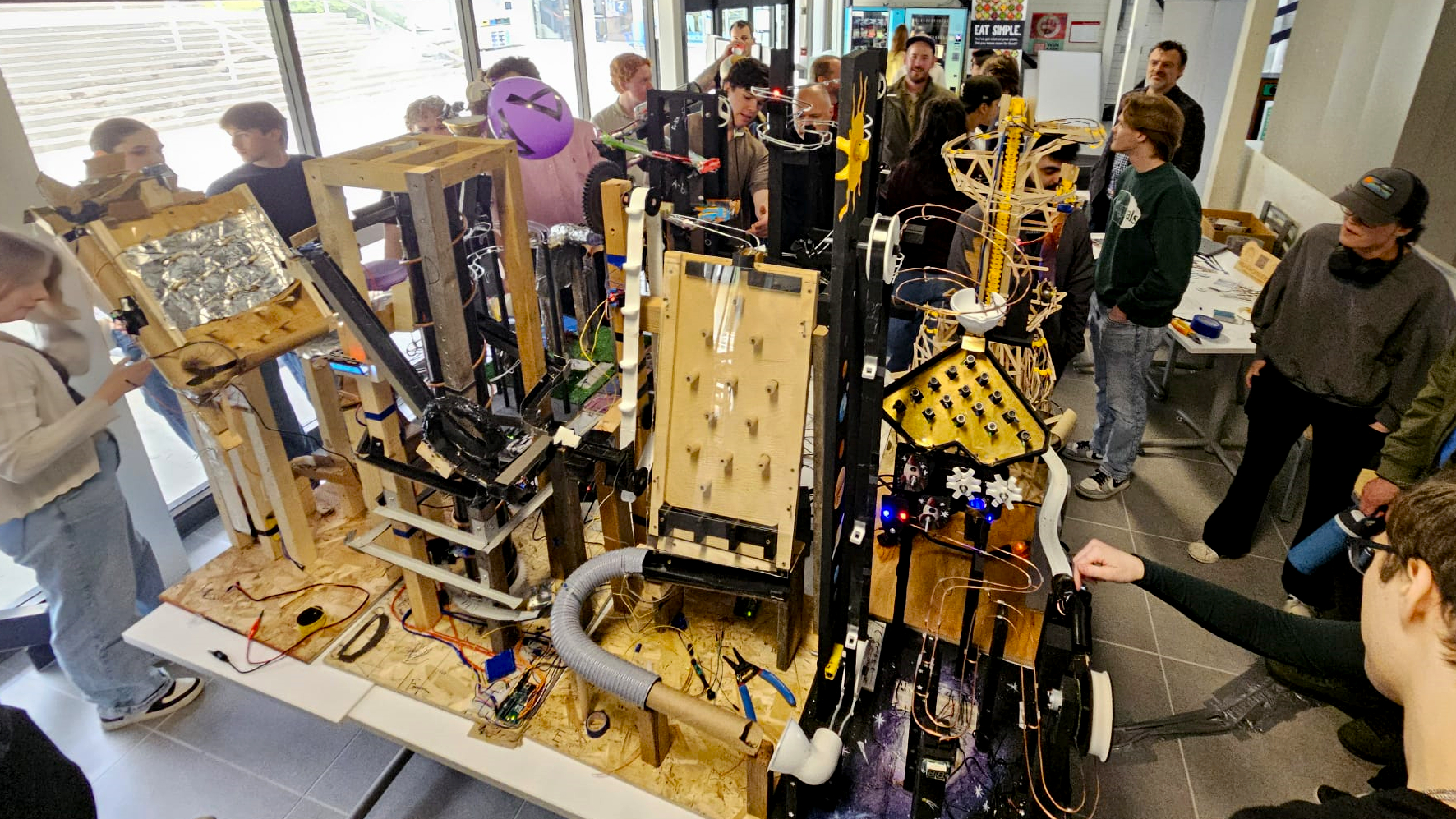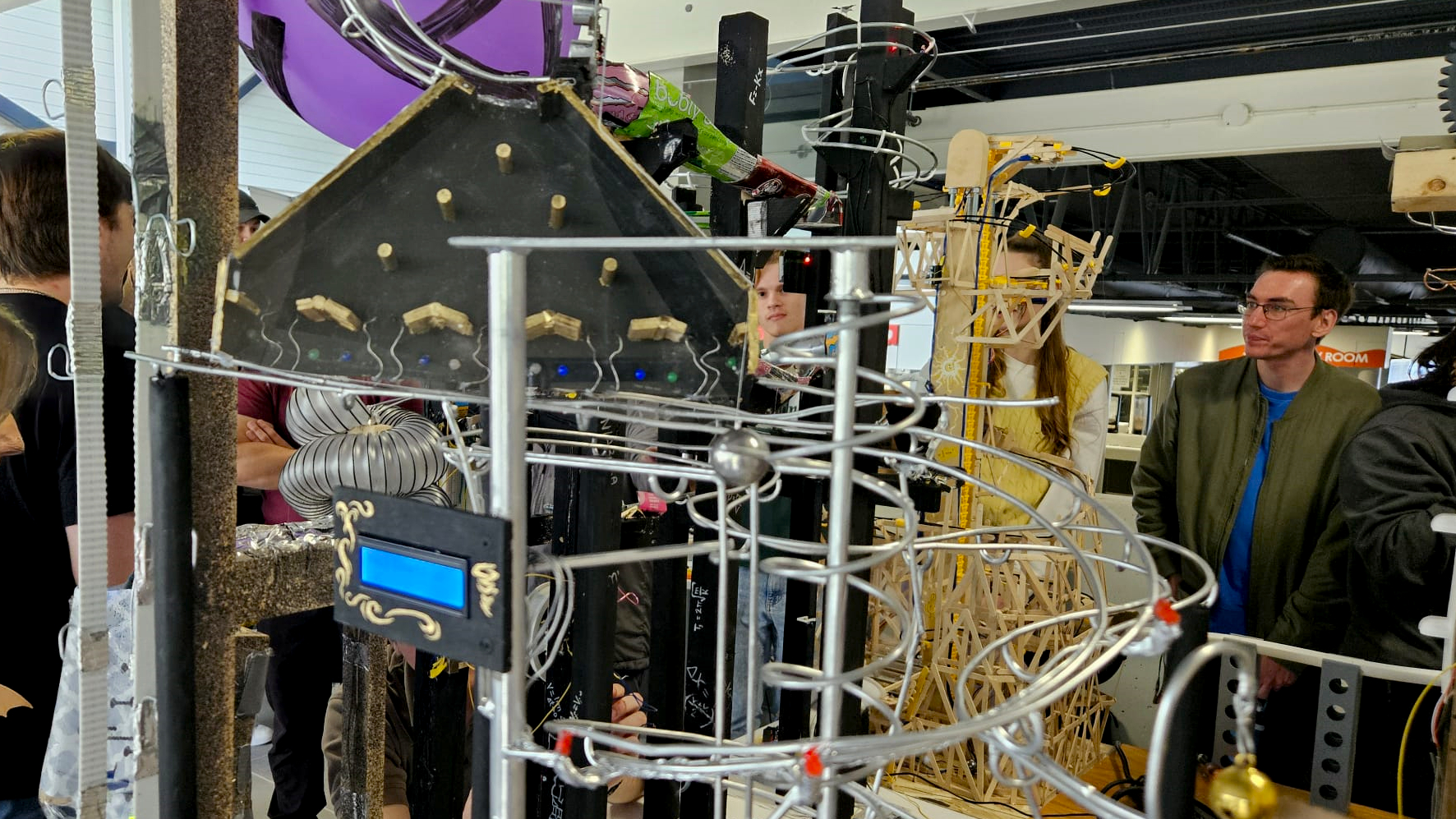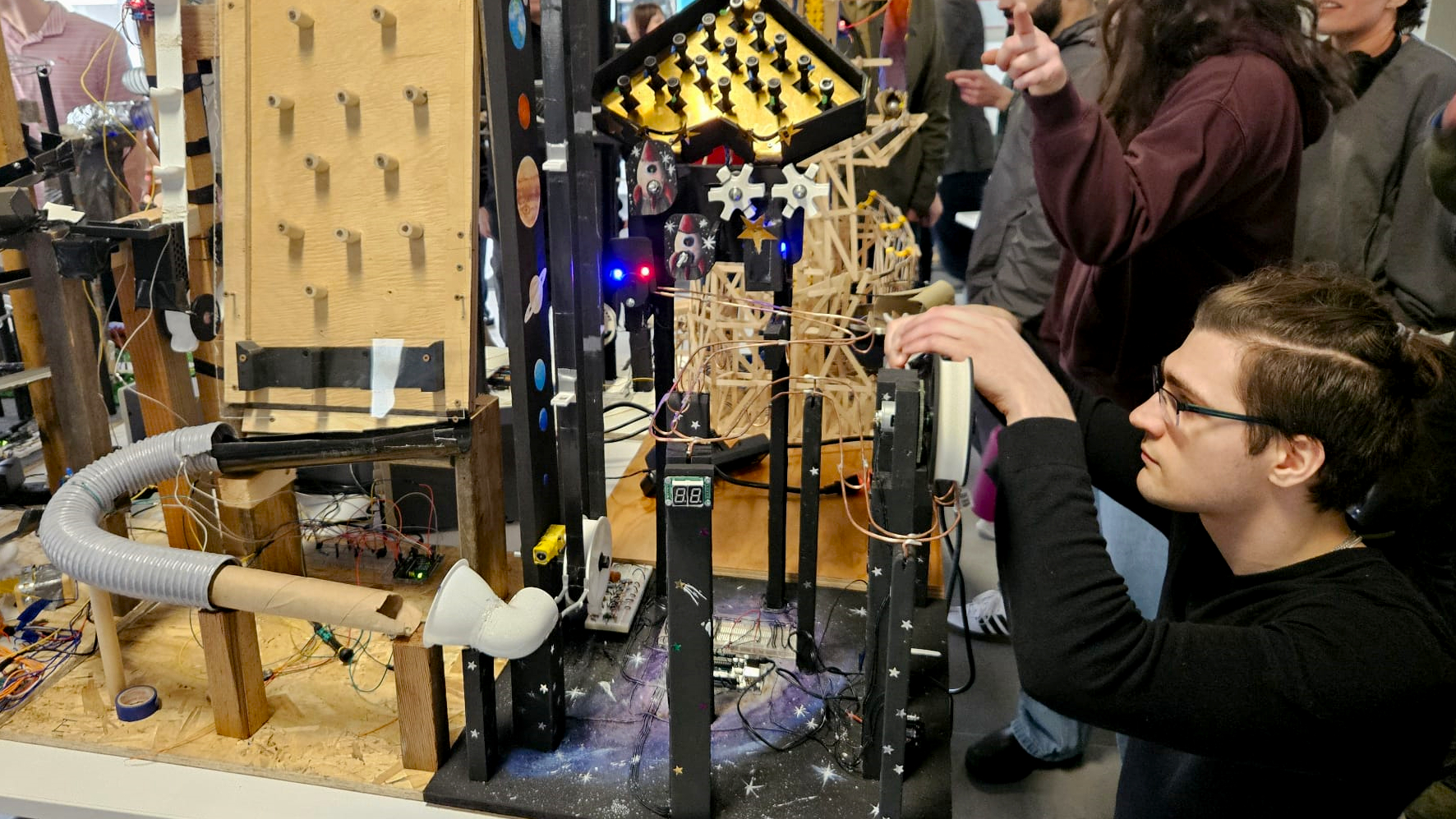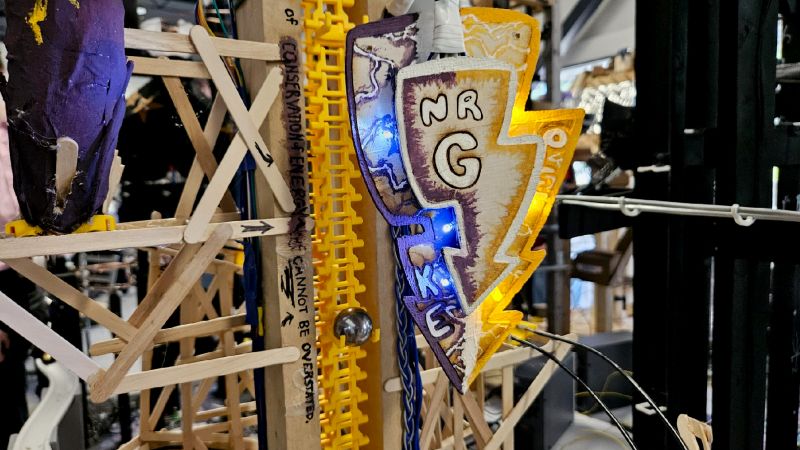NANAIMO — The request was a simple one: move a ball from one place, to another…then do it over, and over and over again.
Students in Vancouver Island University’s Engineering Transfer Diploma course showed off their marble motion creations on Friday, April 11, the result of months of work to learn and demonstrate an array of physics and engineering principles.
Brian Dick, chair of VIU’s engineering program, told NanaimoNewsNOW teams students had a few basic instructions but otherwise they were left to their own devices.
“They were required to put four actuators, which are sort of actions on the environment, four sensors to take information from the environment. They’re supposed to use a micro controller…so they do those pieces of it, but as to what sensors, they use, what actuaries they use, that’s kind of that was on them.”
 All the machines were joined together for Friday’s demonstration, testing not only their ability to work independently but also as part of a larger operation. (Alex Rawnsley/NanaimoNewsNOW)
All the machines were joined together for Friday’s demonstration, testing not only their ability to work independently but also as part of a larger operation. (Alex Rawnsley/NanaimoNewsNOW)Designs on Friday ranged from models with carefully calibrated 3D printed parts, to metal tubing, Plinko boards, drink cans and cardboard.
While each design had to be independent, and adequately explain some basic principles to kids in a K-12 environment, the real challenge came when joining them together.
“They could work individually, like the projects could work on their own, but they were intended to work also with everyone else so they’re kind of a competitive, collaborative, sort of environment here,” Dick added.
He also said it’s been fun for him to see how things evolved throughout the design and construction phases.
“They move from a conceptualization in their head of what they want to do…it’s great to see as these ideas evolve over the term to the projects that you’re seeing in front of you, which in this case are very successful.”
 A wide variety in materials were used by the groups, including custom made metal track, 3D printed parks, wood and soda cans. (Alex Rawnsley/NanaimoNewsNOW)
A wide variety in materials were used by the groups, including custom made metal track, 3D printed parks, wood and soda cans. (Alex Rawnsley/NanaimoNewsNOW)Claire Jané and her team built their track from wood, popsicle sticks and dozens of 3D printed pieces.
“We had this idea for prongs that we needed specific, modular, 3D printed pieces, and we designed such amazing pieces…there’s zero margin for error at all, it snaps up the ball no matter where it goes.”
A major feature of their design was the fact it could be adjusted, both physically and via its programming.
Jané said broken pieces can easily be swapped out in the watch band-style design for the pulley system, or the whole machine can be made bigger or smaller.
The on-board sensors also play a role in how it operates.
“After that first ball runs through, it takes all the different sensors that have tripped during that time, averages out the total amount of time sensors have been tripped to make it more and more accurate with every single pass. That was some logic that I was really proud of figuring out and how I was gonna work all that into it.”
 Last minute tweaks were being made on a number of the machines, to ensure they were syncronized with each other. (Alex Rawnsley/NanaimoNewsNOW)
Last minute tweaks were being made on a number of the machines, to ensure they were syncronized with each other. (Alex Rawnsley/NanaimoNewsNOW)Follow us on Facebook. Join Everything Nanaimo on Facebook and stay connected with everything happening on central Vancouver Island.
info@nanaimonewsnow.com
Follow us on: Twitter (X) | Bluesky | Facebook












